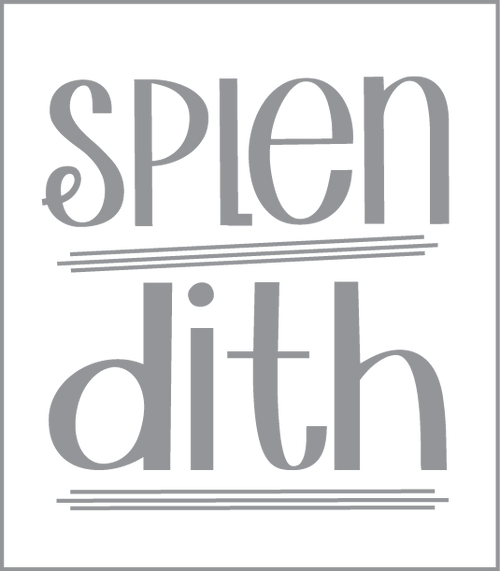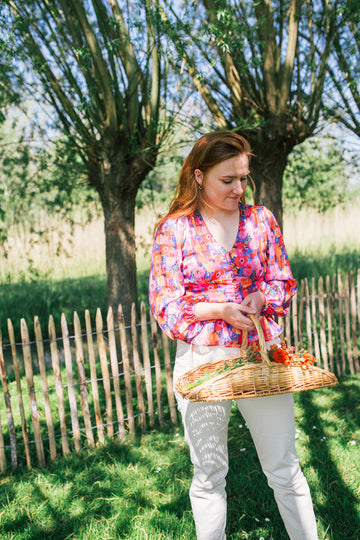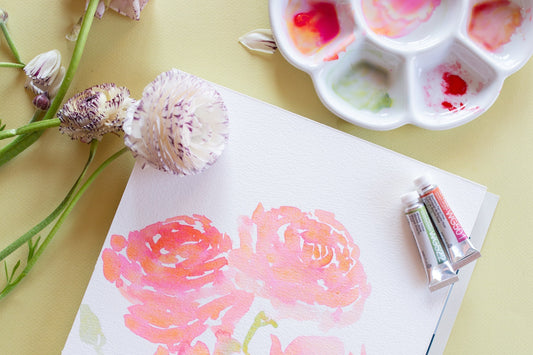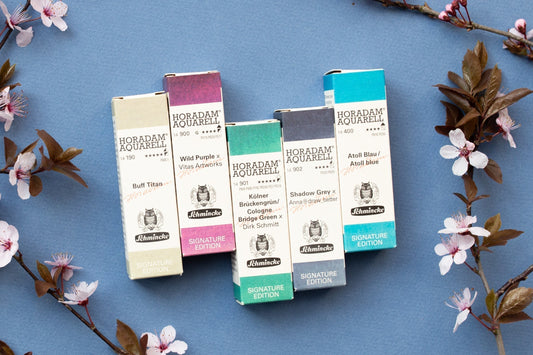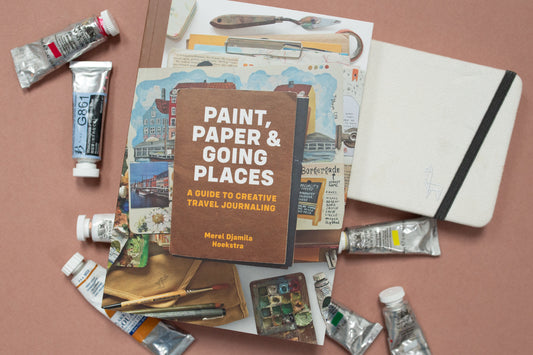Do you want to make your own stamps? Well, where do you start? There is a mountain of materials in the shop, but what do you use for what? Each material has a property that makes them pleasant to use. As always: it remains personal what works best for you. But what is it actually?
How do you make your own stamps?
What seemed like a fairly traditional way of making prints is making a comeback. Use a gouge to cut away the parts that you do not want on the print. What you are left with becomes the final print. It is quite difficult to make a good straight cut in a carving block, so you definitely need some practice before you make the most beautiful prints ;). I will explain exactly how to do that in another blog: read it here . Hopefully this blog will help you choose the right materials.
When you start making stamps you will need four different materials.
Materials:
- Guts
- Gouging block or carving block
- Stamp pad, ink or paint
- Paper

These are very broad concepts, but at the same time also the structure of this blog. I will explain to you what properties the materials have for each category. But first: what do you actually make with these materials?
Guts
It is important that a gouge fits comfortably in the hand. Consider how you want to use the gouge. You always use a gouge in a cutting motion away from you. That's why the handle is in your palm. A round handle is therefore comfortable to use.
Abig stamp gouge
TheAbig stamping gouge set is the most favorite set for gouging. The handle fits comfortably in your hand, the round shape allows you to hold it firmly in your palm and you can easily apply some pressure due to the comfortable shape.
Rico stamp gouge
The Rico gouge set is especially nice because all gouges have their own handle. So you don't have to keep changing every blade in the handle. The grip is still quite thick, so you have a good grip on the handle while gouging.
Knife
Ultimately, you always use a gouge to remove pieces. As an extra help, you can also first cut the edges with a razor-sharp hobby knife before gouging. This is how you create razor-sharp edges and prints. Then you can then gush away the rest.


Gouge block
Perhaps the biggest difference is in the carving blocks, or gouging blocks. One person wants a very sturdy block to gouge into and someone else wants to cut into a block as if it were a stick of butter. Maybe you don't use an eraser yet. Fortunately, there are many more different options that make gouging much easier for you. I list them in order from hard to soft.
Linoleum
By far the 'toughest' option is linoleum , which is also the most well-known option among many. Maybe you've used that for a school assignment at some point in the past. This material is used by enthusiasts because of its stiff surface, which allows you to work very precisely. It's almost like working in wood, only a little easier. The prints made with lino paste all show the structure of the lino in the prints.
Advantages
- You can work very precisely with it
- It's beneficial
Neutral
- The structure in the print. Of course, what you find beautiful differs per person, which is why this characteristic is marked as neutral
Cons
- The smell, linoleum smells quite strong
- Because linoleum is very sturdy, there is a chance of your gouge slipping
Essdee Soft cut or easy cut
The Essdee SoftCut is somewhat softer than the Speedball Speedy-Carve and has less bounce. The material is compact, does not crumble or break and is therefore very suitable for precise work. One side is smooth, the other side is textured. The white color makes it easy to draw on with a pencil. The blocks are 3 mm thick.
Advantages
- Picks up ink finely
Cons
- The material is not strong enough to use as is, so I recommend that you strengthen it with a block of wood or plastic.
Factis Carving blocks
The Factis carving blocks are ideal for making stamps and prints. The flexible vinyl is very flexible, only 6 mm thick and your carving knife will slide right through! You can make very precise lines and details. The Factis blocks are almost the same as the Speedy Carve. I didn't actually find any differences, except for the color.
Advantages
- Good price/quality ratio
- You don't need to reinforce them
- Can be used on both sides
- Almost all types of ink can be used
- Does not contain latex, phosphate and heavy metals
Cons
- Not resistant to solvents
Speedy Carve by Speedball
The Speedy Carve blocks are made of flexible rubber and resemble an eraser. You can easily slide through it with your carving knife. The material is flexible and does not break, crumble or tear. These blocks are ideal for making stamps from photos, transfer images from inkjet printers, etc. The blocks are 6 mm thick.
Benefits
- You don't need to reinforce them
- Does not contain latex
Cons
- The blocks are very pricey

 Stamp pads or ink
Stamp pads or ink
Versacolor or Versacraft
I mention these two ink pads in the same category because people usually ask what the difference is between the two. Without devoting too much of an explanation:
Why Versacolor:
- Available in many different, bright colors
- Great for use on paper
Why Versacraft:
- Waterproof
- Can be used on various surfaces such as: wood, paper, textile and leather
Acrylic paint or ink
In addition to ink pads, you can of course also use other materials for printing stamps and prints.
Ink rollers
Are you going to make large prints? Then ink pads are not suitable. But what do you use? As I just mentioned, you can also use acrylic for printing with stamps. Spread the acrylic paint over the stamp with an ink roller and then place the paper on the plate. Press it firmly and then remove the paper from the printed circuit board. In the shop I have the sizes65 mm and 100 mm.
Paper
For beautiful prints, you ultimately need good paper. It is best to use nice, smooth paper for prints. What usually works very well is Bristol paper . This paper is super smooth and usually about 300 grams so you can immediately use it for hanging on the wall :). Two birds with one stone. Bristol paper is a bit more expensive paper, would you rather practice more often first? Then the Mixed media paper from Strathmore is highly recommended! This is smooth paper and well suited for different types of materials.
Of course, all the materials I mentioned in the blog can be found in the shop. All items are linked :).
If something is not clear: please let me know! I would like to help you!
Love,
Judith
